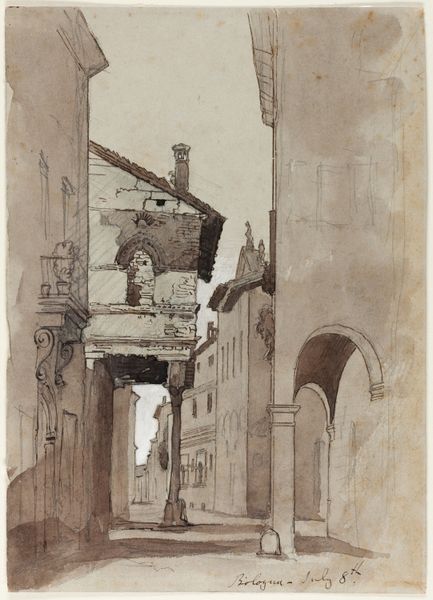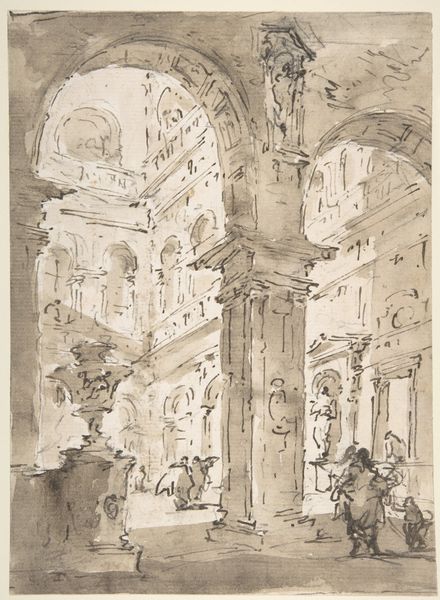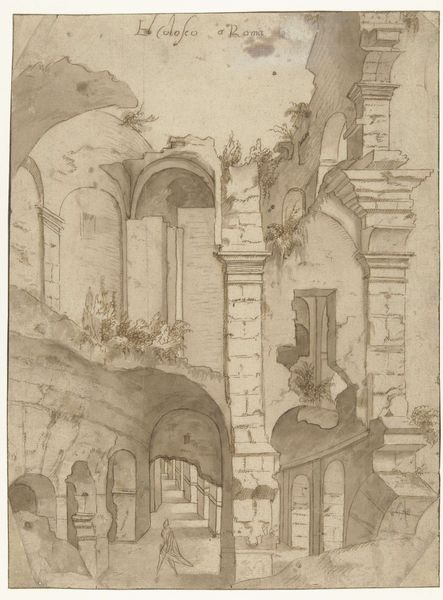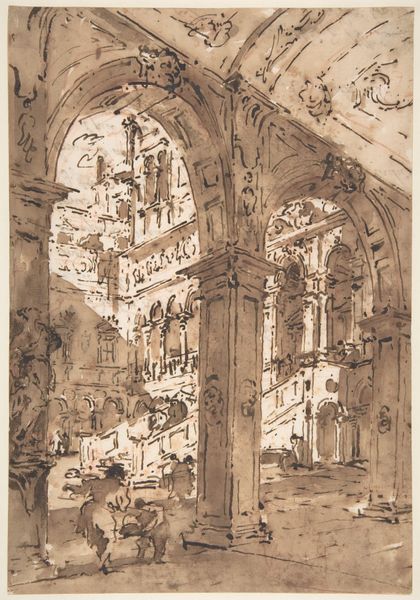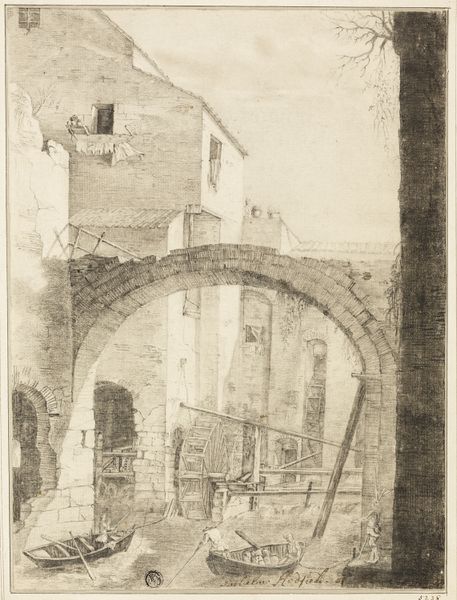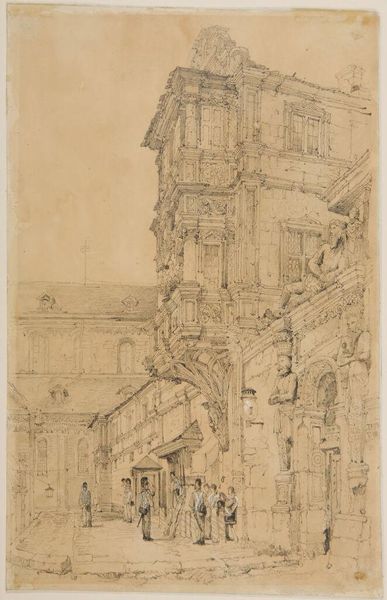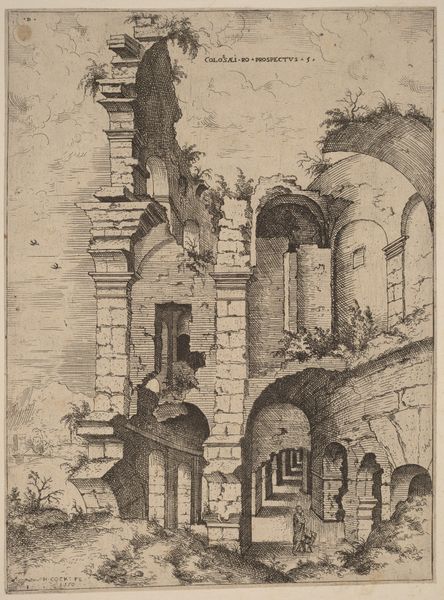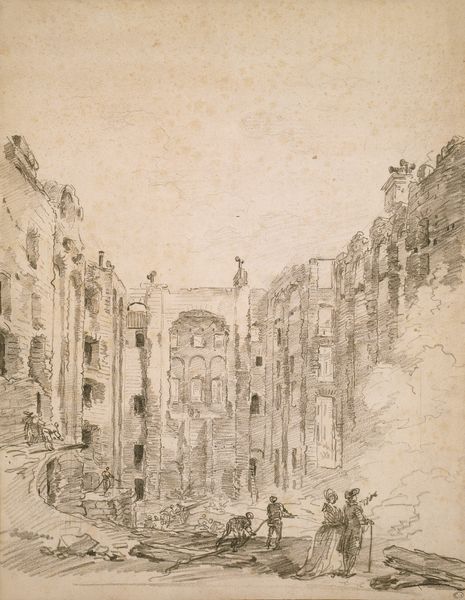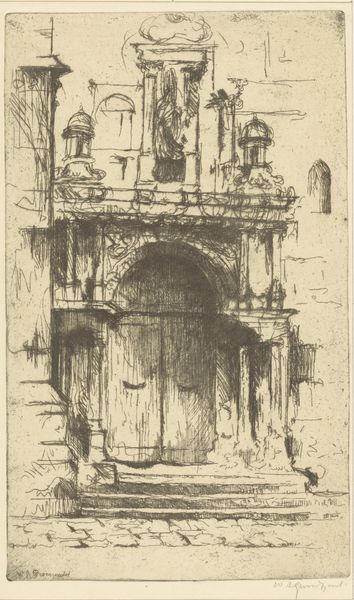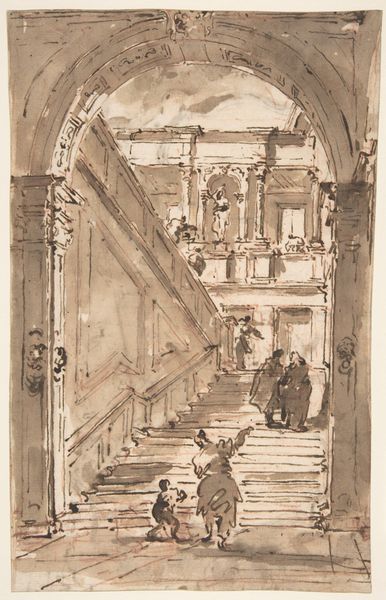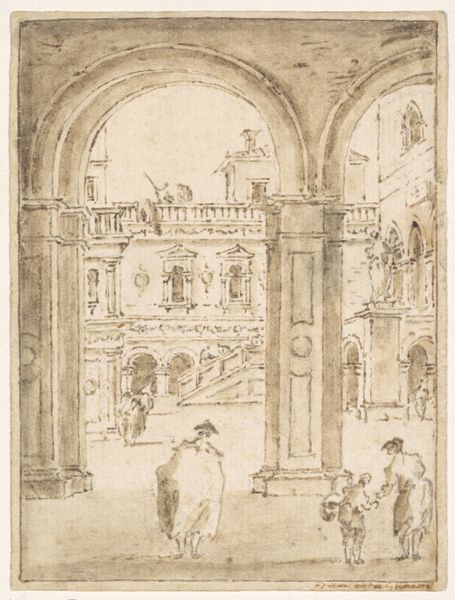
Architectural Capriccio: A Vaulted Passageway (recto); Ruined Loggia (verso) 1725 - 1793
0:00
0:00
drawing, architecture
#
drawing
#
baroque
#
cityscape
#
architecture
Dimensions: 6 3/8 x 5in. (16.2 x 12.7cm)
Copyright: Public Domain
Curator: Ah, this piece just vibrates with a certain… nostalgia, I think. Editor: Agreed. It's easy to romanticize, isn’t it? But let’s ground ourselves. We're looking at a drawing, “Architectural Capriccio: A Vaulted Passageway (recto); Ruined Loggia (verso)” by Francesco Guardi. It's dated somewhere between 1725 and 1793, so think late Baroque, early hints of what becomes Neoclassicism. Curator: Nostalgia definitely bleeds into it because of the sepia tones of the wash. And those wonderfully frenetic lines—they create this gorgeous sense of depth and… what's the word? Fleetingness! As if this grandeur is already fading. Editor: The “fleetingness” connects deeply to the capriccio genre. These weren't meant to be accurate depictions of Venice but rather theatrical fantasies. Guardi, particularly, often used them to critique the crumbling infrastructure of Venetian society. A playful commentary, wouldn't you say, on power and decay? Curator: Playful…yes! I see the irony in his rendering a fantasy so vigorously, almost lovingly, even while alluding to decline. There’s a kind of tender cynicism, perhaps? Like admiring a beautiful ruin precisely because it *is* ruined. Editor: Exactly! That tension is potent. Look at the figures. Are they dwarfed by the architecture, or do they activate the space? There's a hint of the everyday, yet they're anonymous, lost to the grand design, maybe swallowed by the very system Guardi is pointing to. Curator: And isn't it curious that there isn't more emphasis on the actual inhabitants? Those figures aren't fully present to one another, let alone to the space. I like the loggia’s little dangling light. Almost pathetic but still lit, somehow. Editor: Precisely, and that subtle flicker perhaps symbolizes those who refuse to fade out or who persist despite the grand architecture trying to make them invisible. The play of light and shadow serves as a metaphor for the hidden inequalities within the opulent setting. Curator: I think I get closer to understanding something new here each time. And to look at it is a constant experience in time. Editor: Indeed, a mirror held up to both history and the ways we choose to interpret it. I see something a little different, too, each time. Thanks for helping to give the figures voice for a moment.
Comments
No comments
Be the first to comment and join the conversation on the ultimate creative platform.
